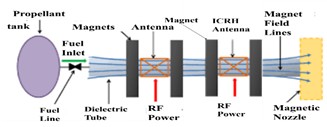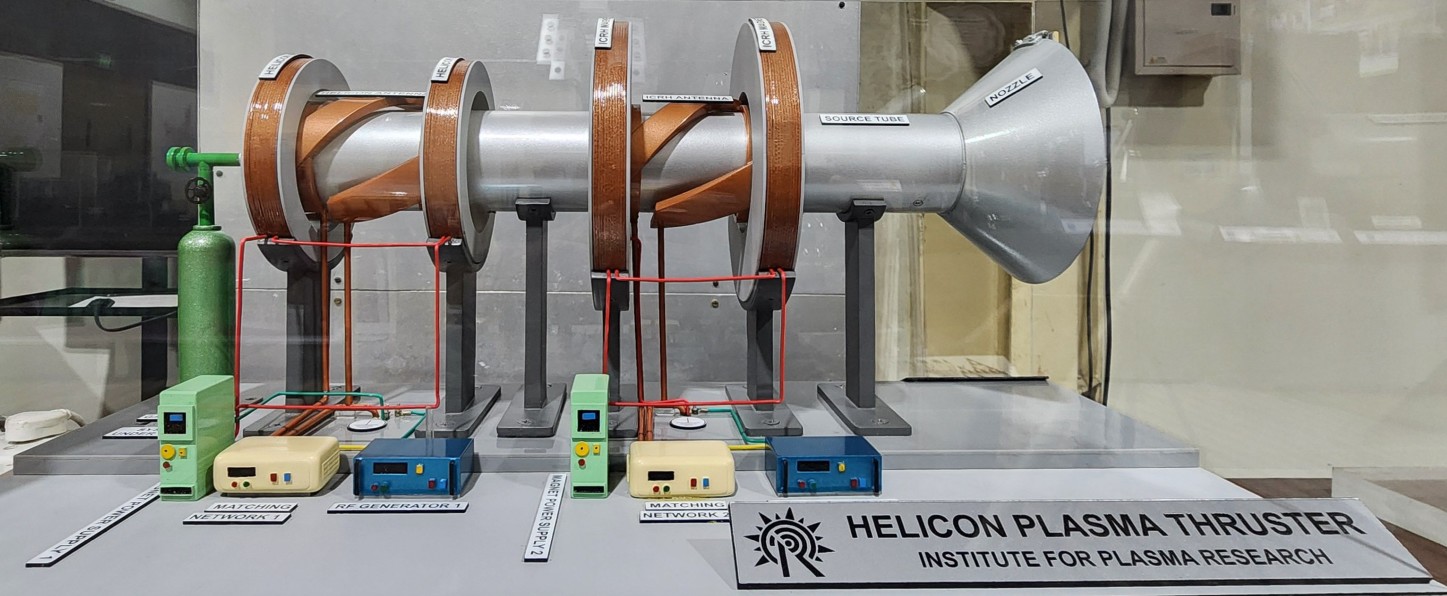Helicon Thruster Model
Helicon Plasma Thruster
A Helicon Plasma Thruster is an electrode-less thruster that uses radio frequency (RF) power to ionize plasma and a magnetic field to control the flow of the plasma and are considered as potential candidates for deep space missions e.g. MARS mission.
Electric Propulsion (EP) yields a higher exit velocity/ specific impulse (1500-2000 sec) of the propellant, which means that smaller masses of propellant need to be carried into space. EP systems normally produce a smaller thrust, hence they are more suited for low thrust production over long periods. EP systems are already in widespread use for orbit maintenance of satellites, slow changes in orbits etc.
Most electric thrusters (mainly Gridded ion and Hall thrusters) use electrodes that are in contact with the plasma and are hence get eroded over time, thus reducing its operational lifetime. In an RF powered thruster, there are no electrodes and the RF antenna provides the power to produce plasma.
A Helicon Plasma Thruster drives the thruster with radio frequency (RF) power, thus eliminating the need for electrodes. Furthermore, this thruster uses a magnetic field to control the flow of the plasma and prevent it from eroding any surrounding materials. These also produce higher thrusts at similar power levels and provides higher specific impulse 5000 – 20000 secs with ICRH stage (which further heats the ions) and hence are considered as much better candidates for deep space missions.
|
 | |
 | |
© IPR, 2017-18
Home Academic Visits | IPR Outreach | Comic Book | Exhibition Hall | Plasma Exhibition | People | Resource Materials | NSD-2025 | Social Outreach | Solar Telescope | Training Program | TokoToy | Vigyan Samagam | 2022 Events | 2023 Events | 2024 Events | 2025 Events | Upcoming Events | FAQ FAQ | Contact Contact | Ask A Question Ask A Question | Talk 2 Us Interact with a Plasma Scientist |
